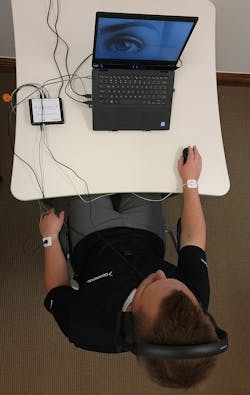A More Honest Lie Detector? Converus Releases First Automated Polygraph
Can a lie detector be made more honest? Yes, according to tech company Converus, if the human element is removed from the test administration process.
It’s been 100 years since the invention of the first modern-day polygraph by John Augustus Larson in 1921. Innovation has been limited during that time. With the invention of EyeDetect+ 2.0, the world’s first automated polygraph, it now takes minutes for examiners to develop test questions, which are then administered by a computer.
Test data are collected and then analyzed by an advanced algorithm. Credibility assessment experts say this automation increases the reliability, objectivity and speed of the testing process, which assures an impartial and more honest determination of the examinee’s innocence or guilt.
“An automated polygraph exam administered by a computer does not discriminate based on a person’s age, ethnicity, gender or sexual orientation,” said Converus President and CEO Todd Mickelsen. “All examinees are treated equally with this automated polygraph test.”
EyeDetect+ monitors and records physiological activity — similar to a traditional polygraph — as well as the same ocular data from the standard EyeDetect test. Unlike the traditional polygraph, an EyeDetect+ test is less intrusive because the blood pressure cuff — which Mickelsen says can become extremely uncomfortable when contracted for long periods of time — has been replaced with small sensors attached to the wrists.
“Polygraph examiners recognize that what makes the polygraph of today better than it was in years past is the addition of more and better data channels, advanced testing protocols, improved sensors, and inclusion of automation for more reliable testing and valid data analysis,” said Don Krapohl, a former assistant director of the National Center for Credibility Assessment and a U.S. federal government polygraph examiner. “EyeDetect+ 2.0 represents the next step in the evolution of the polygraph.”
The previous substantial improvement to polygraph technology occurred in 1991 when scientists John Kircher and David Raskin invented the computerized polygraph.
“EyeDetect+ is a major advancement in the evolution of psychophysiological detection of deception techniques and instrumentation,” said Kircher, who is also co-inventor of EyeDetect and currently the chief scientist at Converus.
With an estimated 2.5 million polygraph examinations conducted annually by U.S. federal, state and local entities, Converus is hopeful polygraph examiners will be quick to adopt EyeDetect+ as tests are conducted in a third of the time with comparable rates of accuracy and less discomfort for the examinee.
“Since EyeDetect+ uses similar questioning protocols as polygraph, it’ll be easy for polygraph examiners to transition to this new technology,” said Mickelsen.
EyeDetect+ is 89-91% accurate, depending on the type of test administered. Converus’ noncontact, ocular-only lie detector EyeDetect, released in 2014, is currently used by more than 600 customers worldwide.
For more information, visit converus.com.



